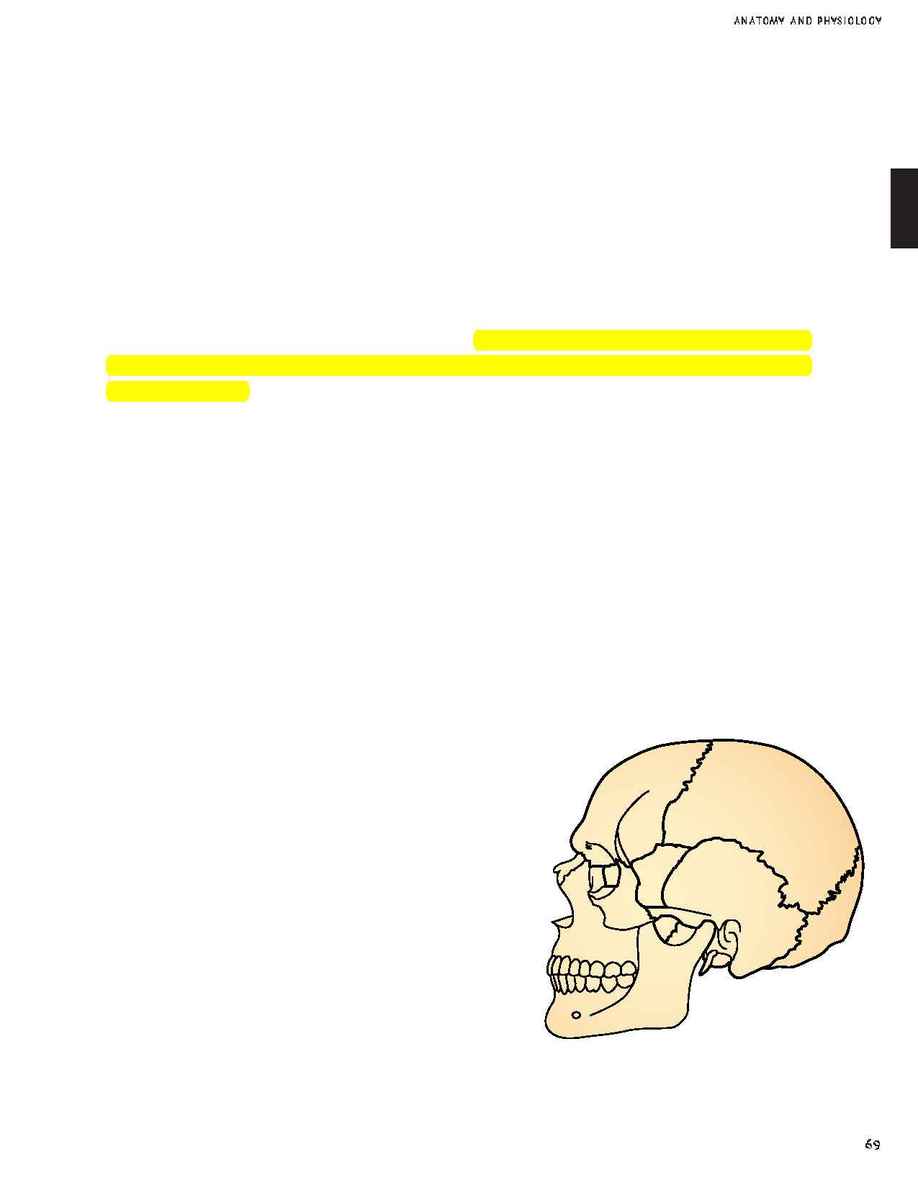
BASIC BODY SYSTEMS
The Skeletal System
The physical foundation of the body, the skeletal system
, is composed of
206 bones
of differ-
ent shapes and sizes, each attached to others at movable or immovable joints. A joint is the point
at which two or more bones are joined together.
Osteology (as-te-AL-e-je) is the study of bone.
The term "Os" is the technical term for bone.
Bones are described as either long, flat, or irregular in shape. Long bones are found in the arms
and legs. Flat bones are plate-shaped and located in the skull. Irregular bones are found
in the wrist, ankle, or spinal column (the back).
Bone, the hardest structure of the body,
is
composed of 2/3 mineral matter and 1/3 organic matter and produces red and white blood cells
and stores calcium.
The functions of the skeletal system include:
1. Supporting the body by giving it shape and strength
2. Surrounding and protecting internal organs
3. Providing a frame to which muscles can attach
4. Allowing body movement
The Skull
The skull is the skeleton of the head that encloses and protects the brain and primary sensory
organs. Bones of the skull are divided into two groups: the eight bones of the cranium and
the fourteen bones of the facial skeleton
.
The Cranium
Of the eight bones that compose the cranium, only six are affected by scalp massage.
1. The frontal is the bone that extends from the
top of the eyes to the top of the head and
forms the forehead.
2-3. The parietal (pah-RI-e-tal) are the two
bones that form the crown and upper sides of
the head.
4. The occipital (ak-SIP-et-al) is the bone that
forms the back of the skull, indenting above
the nape area.
5-6. The temporal (TEM-poh -ral) are the two
bones located on either side of the head,
directly above the ears and below the parietal
bones.
These bones, too, will frequently be referred to when directions are given for hair styling and
cutting techniques.
69
3
ANATOMY AND PHYSIOLOGY
1
4
2 & 3
5 & 6
